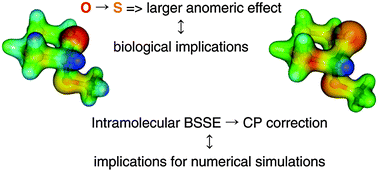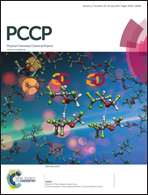Ab initio modelling of the anomeric and exo anomeric effects in 2-methoxytetrahydropyran and 2-methoxythiane corrected for intramolecular BSSE†
Abstract
Accurate ab initio calculations including basis set limit (BSL) extrapolations, removal of intramolecular basis set superposition error (BSSE), solvent effect corrections, and thermal effects have been carried out to compare the structure and the anomeric and exo-anomeric effect in 2-methoxytetrahydropyran and 2-methoxythiane. The effect of intramolecular BSSE on the energetics was outlined for the first time in these types of compounds. It was found that both title compounds show comparable behaviour with respect to BSSE. The energy gap between the axial and equatorial form of 2-methoxythiane is reduced by 0.23 kcal mol−1 due to the BSSE correction at the MP2/aug-cc-pVTZ level of theory, and in 2-methoxytetrahydropyran it is reduced by 0.21 kcal mol−1. The intramolecular BSSE influenced also the energy differences between the gauche and trans conformers in both compounds. Energy decomposition analysis (EDA) reveals that the dominant destabilising interaction is repulsion and its primary stabilizing counterpart is the polarization interaction.


 Please wait while we load your content...
Please wait while we load your content...